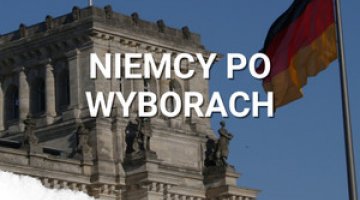Germany plans to adjust its gas network to a rapid increase in LNG imports
On 31 March 2023, the German Association of Gas Transmission Network Operators (FNB Gas) presented its draft Plan for gas network development in 2022–32 (Netzentwicklungsplan Gas/NEP Gas 2022–2032). The document was published after a delay of around a year. Following the outbreak of the war in Ukraine and the associated fundamental shift in conditions for importing gas to Germany (in particular the political decisions made in spring 2022 to build an extensive LNG import infrastructure in Germany, and also Russia’s decision to completely halt its gas supplies to Germany in summer 2022), in November 2022 the Federal Network Agency (BNetzA) modified the framework assumptions it had originally devised in January that year, which had served as a basis for FNB Gas to plan its demand for the expansion of the gas infrastructure. In its new guidelines, the German regulator assumed a permanent absence of gas supplies from Russia, both those intended to meet the demand of the German market and those dispatched via Germany and bound for other European countries. As a consequence, the regulator asked the FNB Gas to take into account the need to connect new LNG terminals to the network and to transmit the LNG imported via these terminals through the German gas network. Moreover, when planning the expansion of the gas network, FNB Gas was expected to consider the forecast approved by the BNetzA showing that German gas consumption will fall in the coming years (the total expected decrease is 20% by 2032 compared to 2021).
In its draft Plan for gas network development in 2022–32, the FNB Gas has included investments worth a total of €4.4 billion. These will cover the construction of new gas pipeline sections, with a total length of 951 kilometres, and a gas pumping station with a total capacity of 164 MW. The vast majority of the planned investments (estimated at €1.9 billion, or 43% of the total value) results from the need to replace Russian gas with LNG, to be imported directly via the existing and planned German terminals and via gas ports located in neighbouring countries (mainly the Netherlands and Belgium). The remaining funds will be spent on the investments specified in the 2020 plan which have not been carried out to date (€1.8 billion), and on new projects intended to eliminate the network’s bottlenecks (€700 million).
Aside from the investments connected with the expansion of the gas infrastructure, FNB Gas’s document includes a model of the future German hydrogen network which has been compiled on the basis of a market analysis and consultations with potential industrial producers and consumers of hydrogen. According to FNB Gas, the network should comprise gas pipelines with a total length of 2900–3000 kilometres by 2027, and 7600–8500 kilometres by 2032. The investment is expected to cost €2.3–2.8 billion in the first stage and €8.1–10.2 billion by 2032.
The NEP Gas 2022–32 project needs to receive approval from the regulator, which is required to hold consultations with other market participants; as a result of these consultations, it may ask the operators to introduce certain modifications. On the basis of the energy management act (EnWG) and in line with the EU’s 2009 gas regulation, FNB Gas is obliged to update the gas network expansion plans every even year. The previous document covers the years 2020–30, and the investments specified in it are funded from the revenue earned by collecting a network fee from gas consumers.
Commentary
- The large-scale construction of new LNG terminals in northern Germany, increased LNG imports from Norway, the Netherlands and Belgium, and the expected permanent absence of supplies from Russia, all indicate that the network operators assume a major change in how the German transmission system operates is imminent. Germany will need to re-orient this system to receive supplies from new sources, that is, from the north-west, and to transmit gas southwards and eastwards. Until recently, this system was mainly used to import Russian gas and transmit it westwards. This in turn creates the need to expand certain sections of the network in order to avoid the formation of bottlenecks which would prevent the operators from using the entire capacity of the new terminals. The great majority of the investments FNB Gas has planned, which are linked to the integration of LNG into the German system, should be finished by 2026, just ahead of the planned opening of the onshore gas ports in Wilhelmshaven, Brunsbüttel and Stade.
- Although when the BNetzA finishes its consultations, it may request that FNB Gas introduce modifications to the presented draft plan, experience from work on previous versions of the document indicates that these modifications will most likely be minor. For example, it is still unclear whether all of Germany’s planned LNG terminals will indeed be built (no final investment decisions regarding the three planned onshore gas ports have been made). The scale of the investments in LNG import infrastructure announced has sparked major controversy in German public debate for months. In particular environmental organisations and a major portion of energy policy experts argue that not only is it unnecessary to implement all the announced projects (because it will lead to the emergence of a considerable natural gas surplus that will exceed Germany’s demand), but it will also be harmful when viewed from the perspective of public finance (big costs) and the context of achieving climate policy goals (there is a risk that the transition to new energy technologies will lose momentum as incentives to prolong and increase the use of natural gas emerge). Moreover, the planned construction of specific terminals is opposed by both local communities and environmental activists (this refers in particular to the planned LNG hub near Rügen).
- At this point, the variant of the hydrogen network specified in the NEP Gas project is just a plan; it does not form a basis for taking specific decisions or initiating legal or investment moves. On the one hand, the modelling of the hydrogen transmission infrastructure is intended to forecast the demand for hydrogen transport in terms of its routes and volume. On the other, it is intended to show which of the existing natural gas pipelines can be switched to hydrogen transmission, and to find out whether the gas system needs to be strengthened at other points before these pipelines can potentially be disconnected from it. However, the present legislative and regulatory framework does not allow for any activities linked to switching the gas pipelines currently being used to hydrogen transmission. The German government has announced its intention to introduce the relevant legislative amendments by the end of this year.





